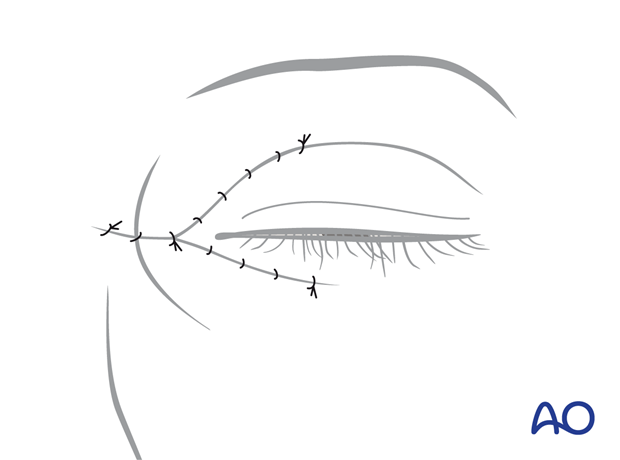Extended glabellar approach (horizontal Y approach)
1. General considerations
The glabellar approach is performed if a convenient preexisting laceration is present. Furthermore, the glabellar approach can be particularly advantageous in elderly patients who have developed horizontal glabellar furrows due to the action of the procerus and corrugator muscles. This approach may also be considered to avoid a coronal incision where only limited exposure is needed in a younger patient with a receding hairline or a bald patient.
It addresses the NOE area (A), but it does not provide enough access when the medial canthal tendon area needs to be reduced. When wide visualization of the medial canthal area, lacrimal sac, and the medial orbital wall is necessary (B), an extended glabellar approach is helpful. When further exposure is needed (C), other approaches such as the retrocaruncular approach or coronal approach can be used.
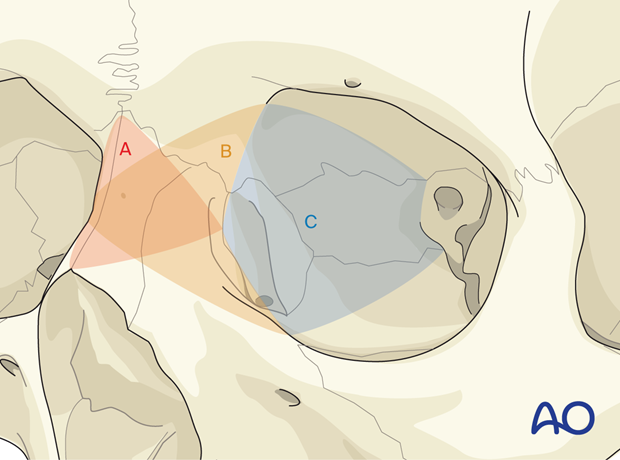
Surgical landmarks along the dissection of the medial orbital wall are the:
- Anterior lacrimal crest
- Anterior ethmoidal artery (15 mm from the crest)
- Posterior ethmoidal artery (25 mm from the crest)
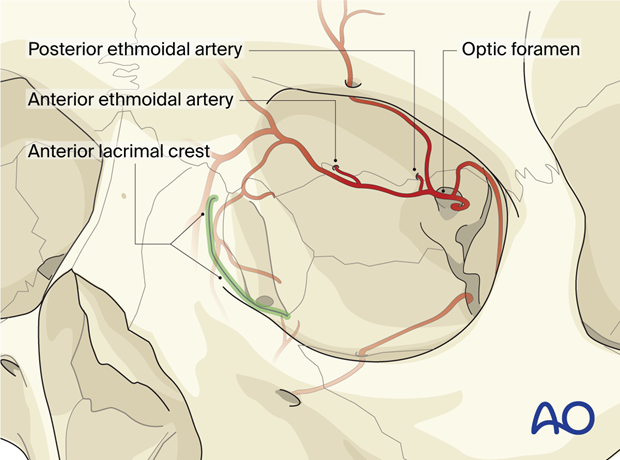
2. Corneal protection
The cornea should be protected with a tarsorrhaphy or a corneal shield.

Tarsorrhaphy
A temporary tarsorrhaphy is recommended to help protect the cornea. This is done by employing a mattress suture.
A 6.0 suture is passed through the skin of the upper eyelid and then passed through the Gray line of the upper lid margin.
The tarsorrhaphy is not tightly secured, and some space is left between the knot and the upper eyelid skin. A hemostatic clamp is used to grasp the suture and apply traction to the lower lid for full eyelid closure during the surgical procedure.
Since the suture is not fully tightened, when the hemostatic clamp is released, the lid may be opened to perform a forced duction test or to evaluate the pupil during the procedure.
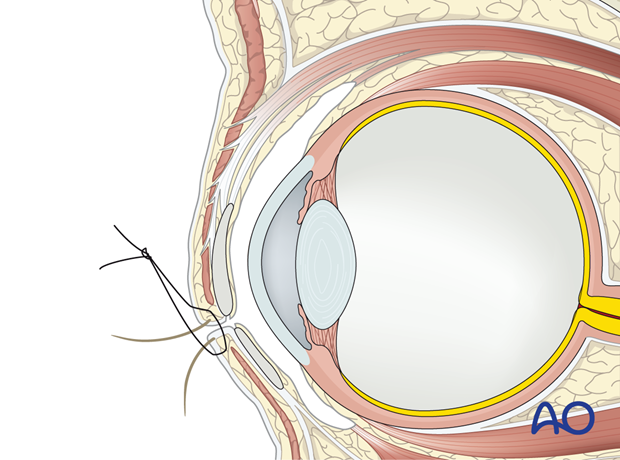
3. Skin incision
Locating the skin incision
The incision should be planned in the glabellar furrows or, if appropriate, in the region camouflaged by the bridge of eyeglasses.
The incision is extended from the lateral nasal bridge to about 3 mm medial to the skin edge of the caruncle. From there, it bifurcates into an upper and lower eyelid incision. These two extensions can be taken up to the midline of the eyelids.
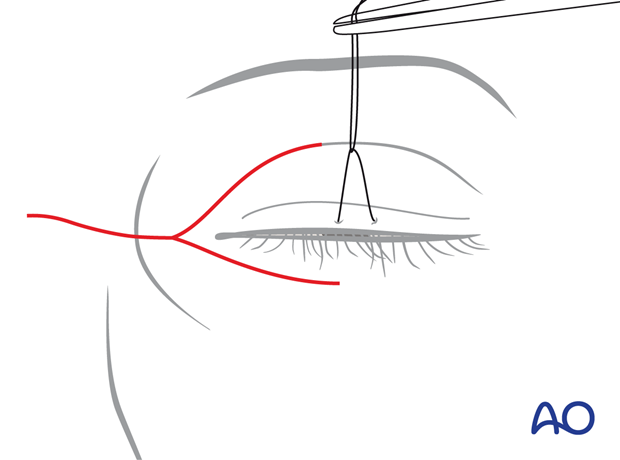
Skin incision
Perform a skin incision with a scalpel along the planned incision line. Dissection should be carried down in the canthal area, and the medial canthal tendon should be identified. Then, dissection should be extended on the upper and lower eyelid incisions.

4. Dissection
Once the canthal tendon is clearly identified, the dissection can proceed to a subperiosteal plane to expose the nasofrontal suture and the frontal process of the maxillary bone along the medial orbital rim.
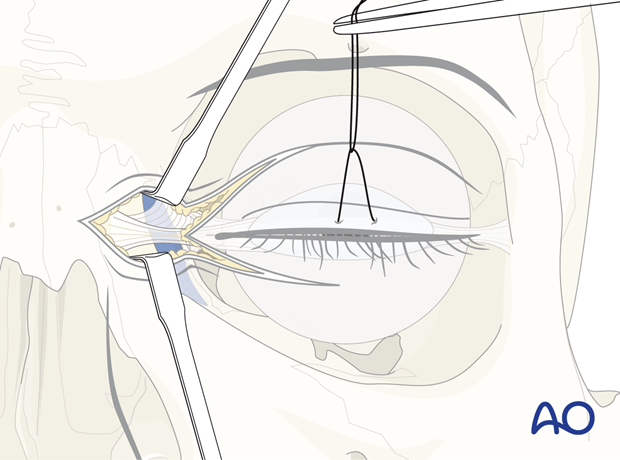
5. Exposure
The soft tissue is retracted to expose the fractures.
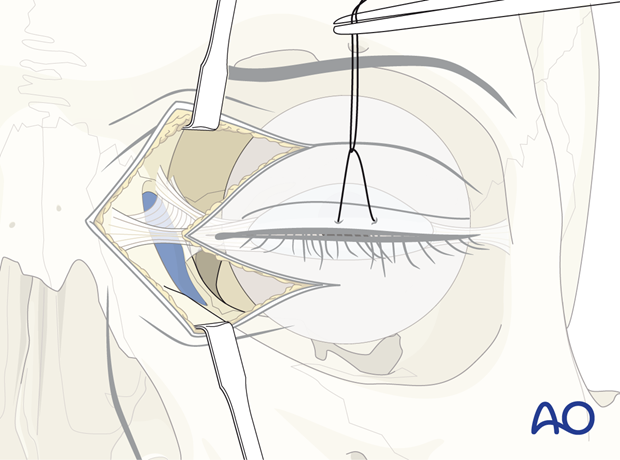
6. Wound closure
A simple layered closure is performed, as for any incision or laceration in this area.
